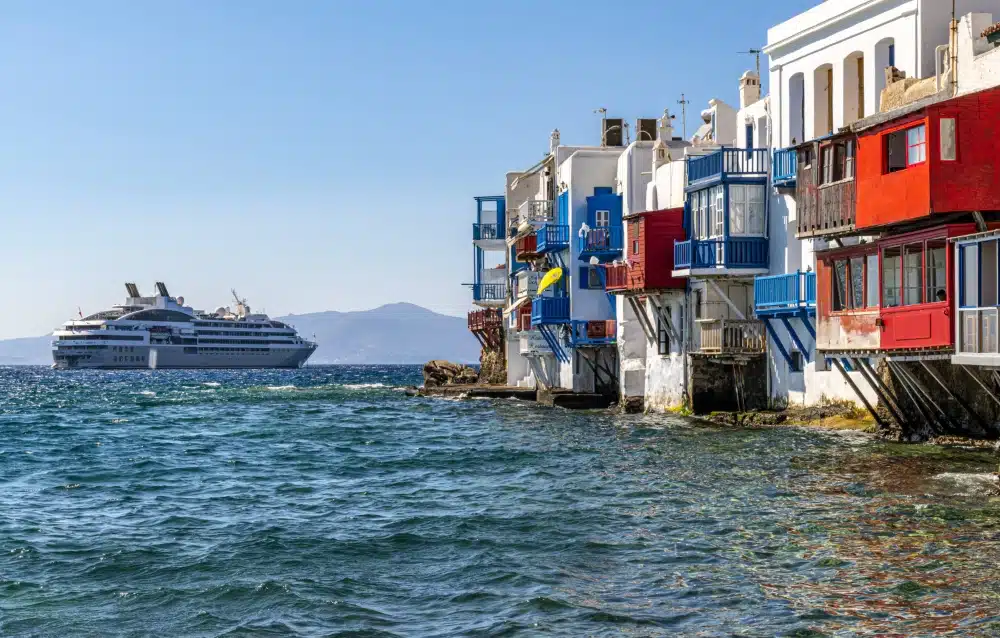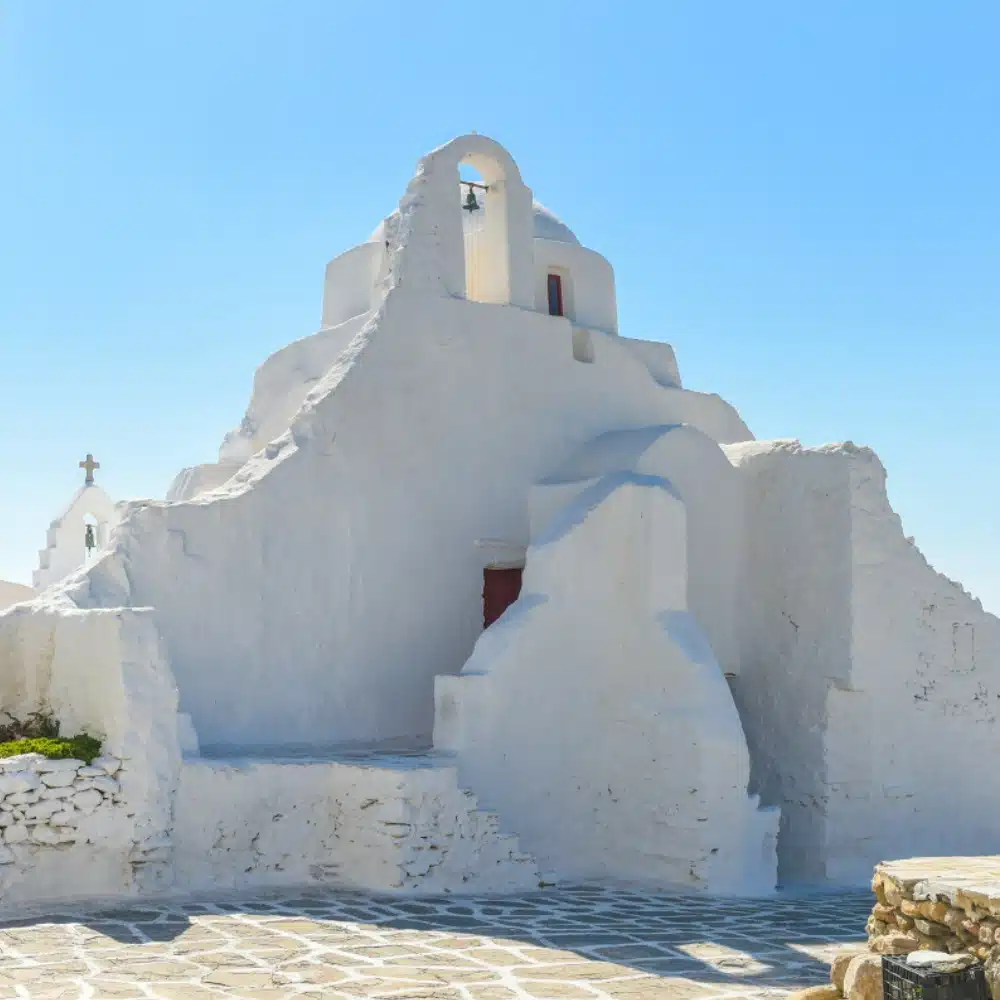It’s time to move Mykonos, one of the smallest of the Cyclades Islands in the Aegean Sea, off your bucket list and onto your book-it list. A PONANT small ship luxury cruise will take you there in ultimate style and immerse you in the rich and welcoming culture of the Greek Islands.
As you approach Mykonos, the first thing you’ll notice is the white buildings that drape the gentle hillsides; they appear to have emerged straight from the glittering waters of the turquoise-colored sea. As the ship draws closer, the buildings start to take shape like sugar cubes, festooned with red and pink bougainvillea. At the sea’s edge, beach-goers lounge on soft sands kissed by Aegean waters while conical, thatched-roof windmills perch on high ridges.
Mykonos is a sun-splashed, white-washed, island lover’s dream. A laid-back Aegean lifestyle reigns here, as any visitor will discover during a stroll along the maze of lazy streets that weave their way past white cubist houses faced with striking blue doors.
This famously pretty island holds many charming, “only on Mykonos” secrets, and we’re letting you on some of them here:
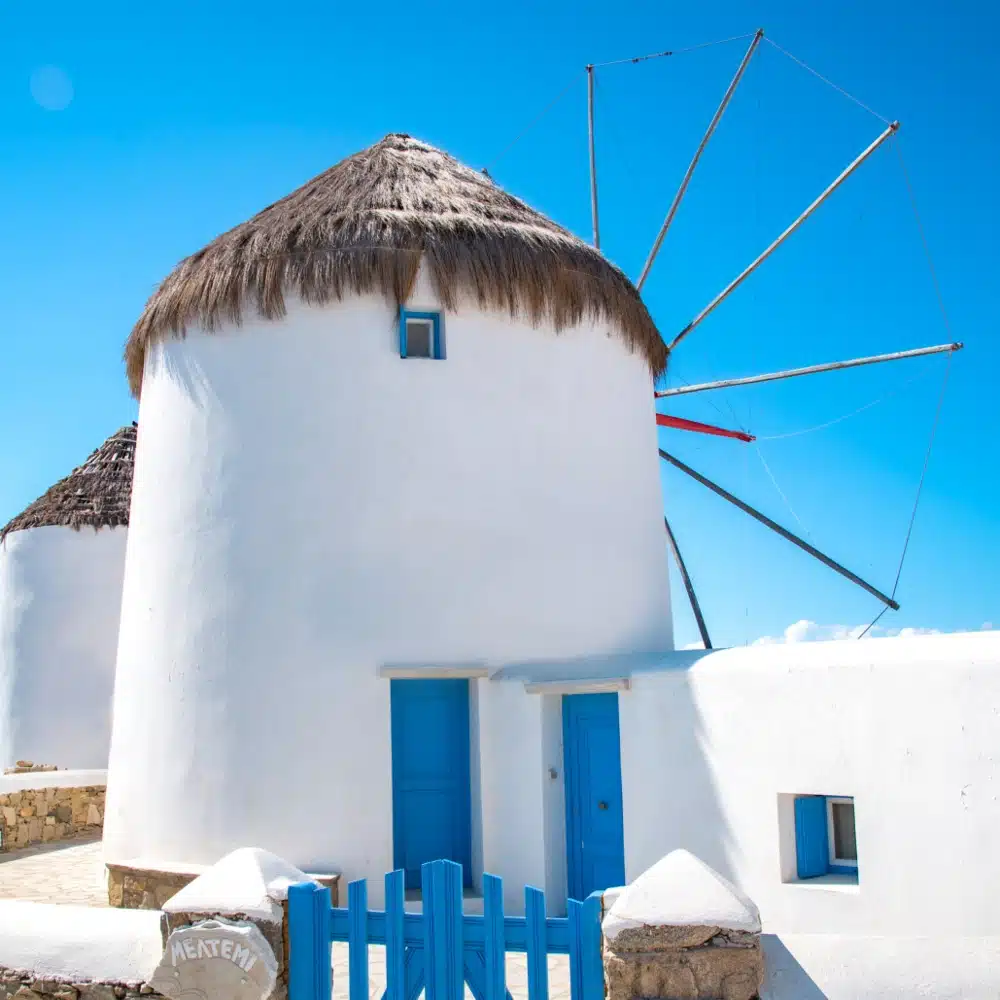
Luscious Primary Colors
Locals might tell you that the blue hues (and you’ll see many of them!) are inspired by the sky and the ocean, while the white facades embody waves and clouds. Others will tell you that the island’s renowned color scheme was born of more practical considerations. A blue door signifies the home of a sailor. A green door points you to a farmer. And the white finish is a mix of calcium carbonate or limestone plaster, a concoction that not only reflects the heat of the sun but also has proven to be harmless to goats who were once fond of munching on abodes.
Hidden Treasure
The old fishing houses of the Little Venice district directly abut the water, their balconies allowing fishermen to keep a watch on sea conditions. But these homes were also built with tiny waterfront basement doors that led into storage areas. Some still believe that the underground rooms were the ideal place to hide loot stolen from trade ships and that some of the fishermen were pirates.
Archival Windmills
The lower windmills of the main town of Chora (known as “Kato Mili”) stand in a neat row on a seaside ridge. Venetians built them in the 1500s to mill flour, a purpose they continued to serve for almost 400 years. Today, many of the former mills are residential homes, while others serve as secure vaults for documents that commemorate the island’s rich heritage.
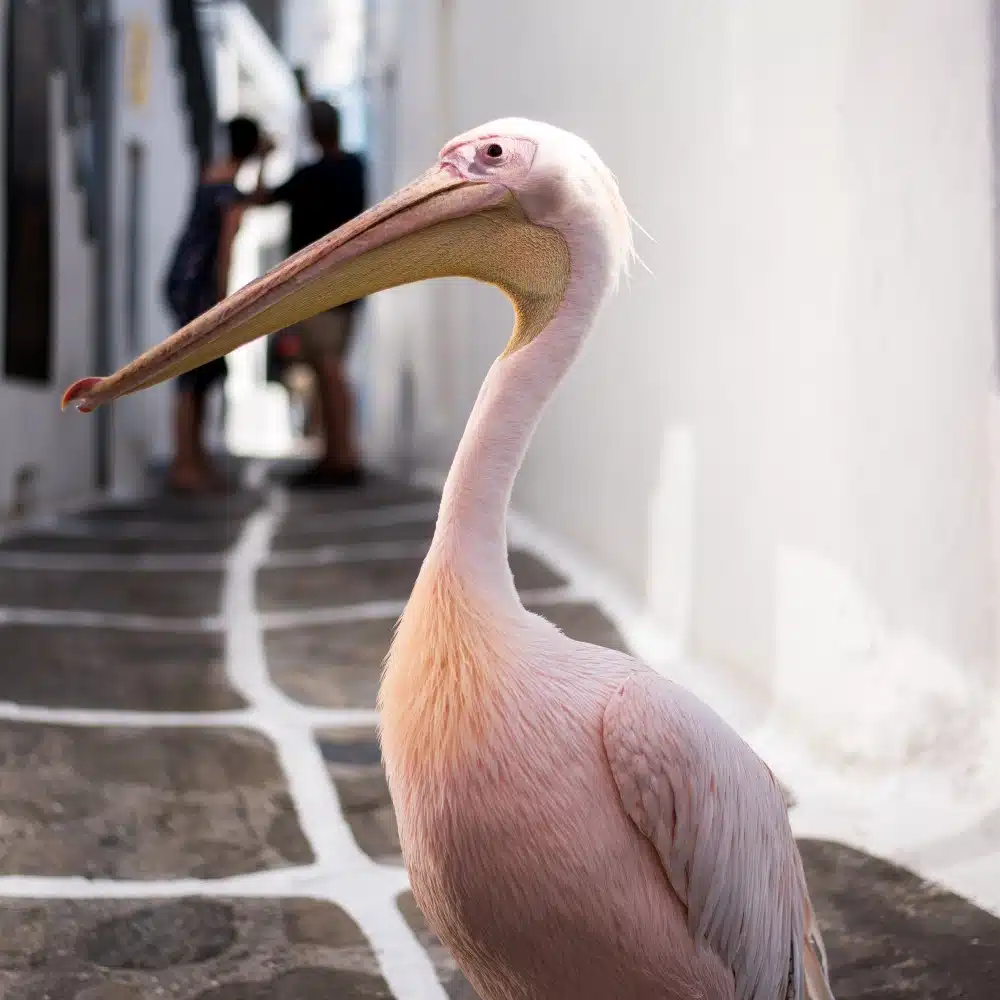
Pelican Pride
The official mascot of Mykonos is a pelican named Petros. It wasn’t too long ago that Petros was alive and well and freely roaming the main town of Chora. He was crowned as the town’s favorite companion in 1954 when he sought refuge here during a storm. After his death, the islanders appointed a successor.
Mykonos Mule
In addition to pelicans, you’ll see donkeys as you explore Mykonos. For centuries, they have been dedicated work animals to farmers and builders. In the island’s rural reaches, especially, donkeys were a handy beast of burden and a mode of transportation.
Mykonos Myth
Like most anywhere in Greece, Mykonos has its place in mythology. Mykonos is the location where Zeus battled the notorious Giants in the great Gigantomachy, and where Hercules slayed giants after having lured them from Mount Olympus. You’ll see many large boulders as you explore; each is believed to be a petrified corpse of a giant.

Church-goers
Mykonos is home to more than 400 churches and chapels, though some estimates put that number closer to 600! Most of these sacred, and often modest buildings, date to the island’s Byzantine era. By some accounts, there is one church or chapel for every Mykonian family.
Mamma Mia!
A heroine of the Greek Revolution of the 1820s hailed from Mykonos. Her name was Manto Mavrogenous, a wealthy and educated islander who gave away her family fortune so that Greece could be freed from the rule of the Ottoman Empire.
Jet-setters
Celebrities like Jacqueline Kennedy Onassis, Marlon Brando, and Elizabeth Taylor helped put Mykonos on the tourist map in the 1960s and 70s. They infused glamour into the island that locals had never seen before. Today, it is one of the most luxurious Greek Islands to visit.
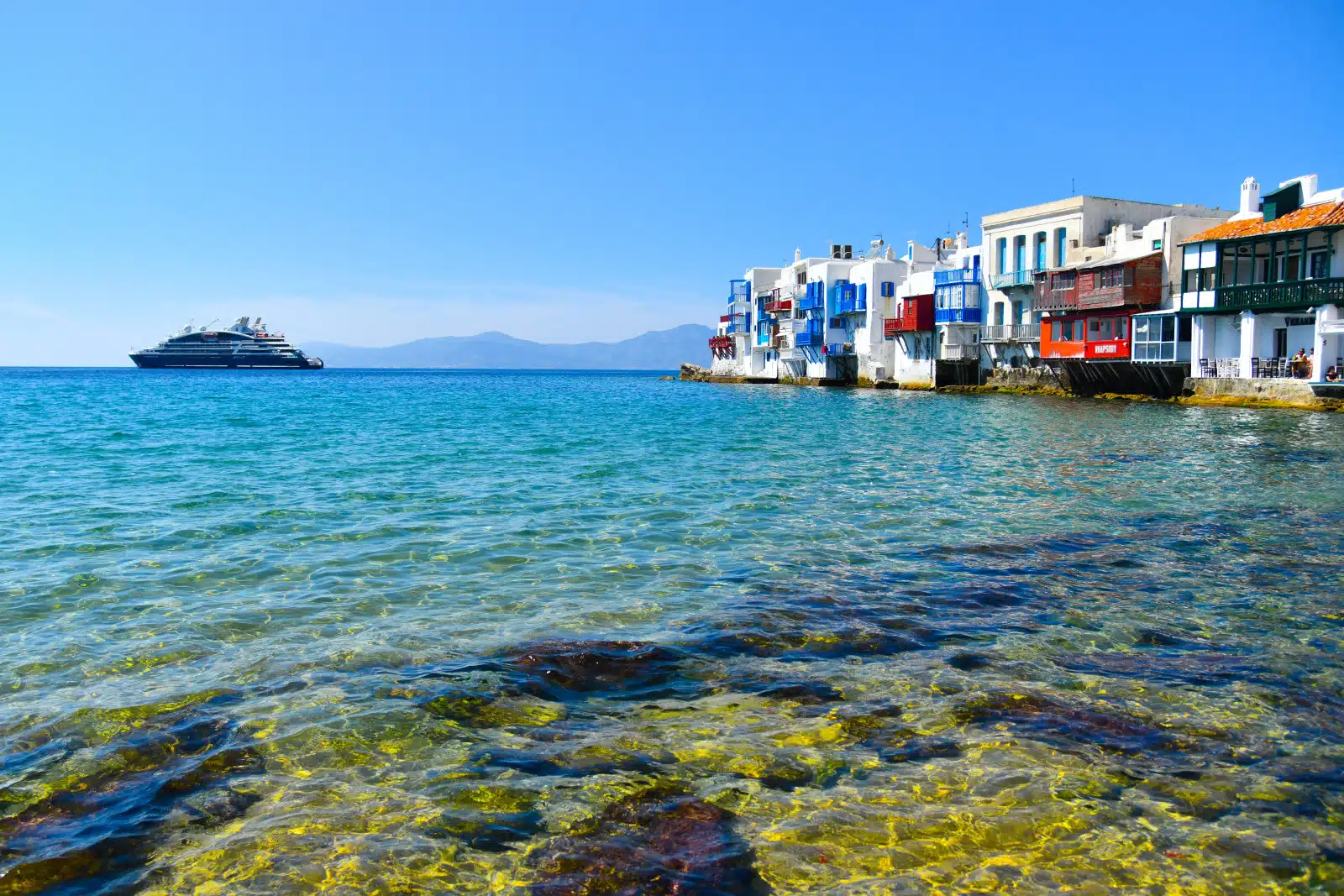
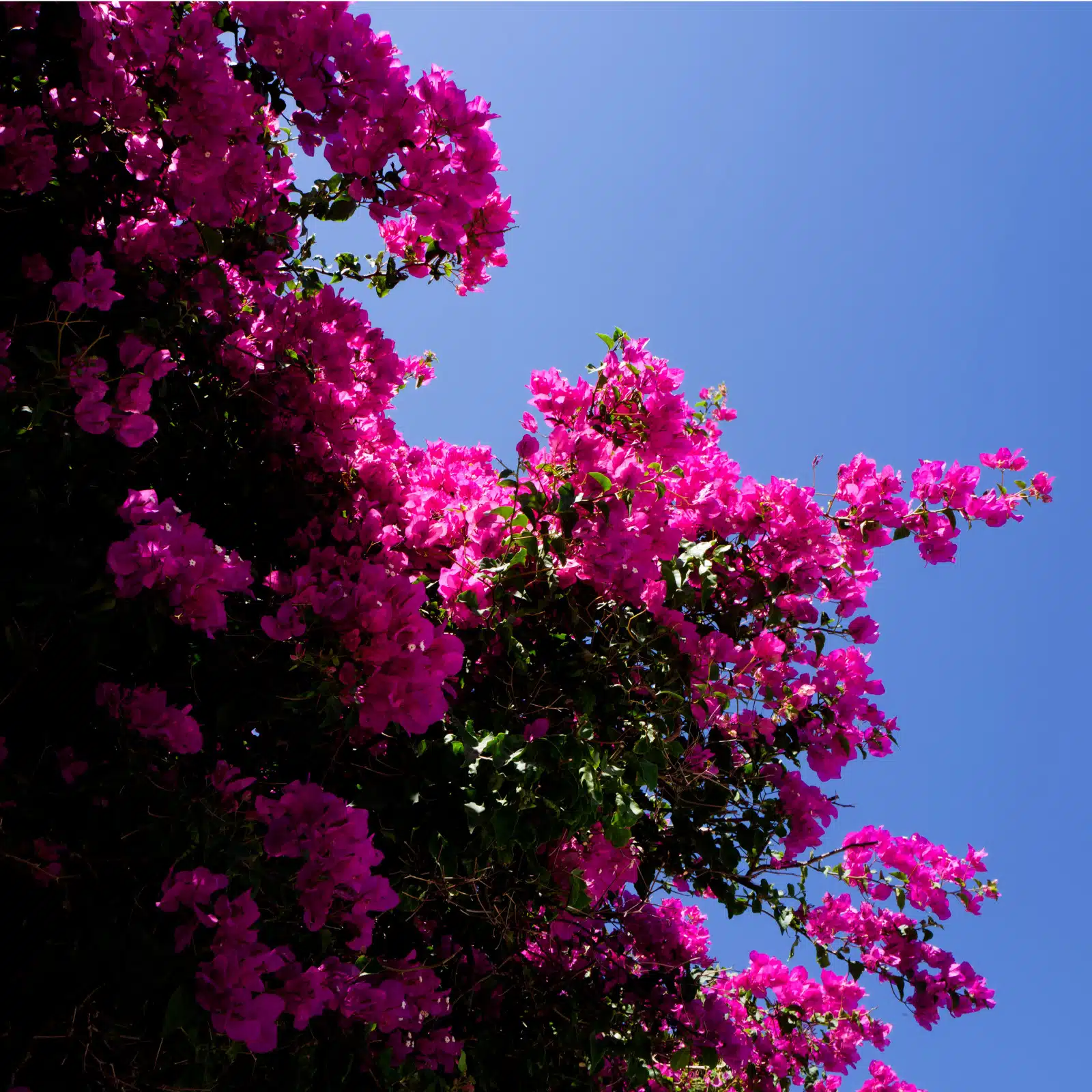
Uncover the Secrets of Mykonos
We invite you to uncover the pleasures and secrets of Mykonos during a PONANT luxury small ship journey in the Aegean Sea.

